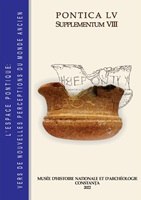Considerations on Monetary Treasures composed of Callatian Coins of the Hellenistic Period
Considerations on Monetary Treasures composed of Callatian Coins of the Hellenistic Period
Author(s): Gabriel Mircea TalmațchiSubject(s): Archaeology, Cultural history, Economic history, Social history, Ancient World
Published by: Muzeul de Istorie Națională și Arheologie Constanța
Keywords: Callatis; coins; hoards; workshop; Dobrudja; Hellenistic period; contramarks;
Summary/Abstract: A number of 14 monetary hoards from the Hellenistic period are analyzed. They have been published in the scientific literature and are composed only of Callatian coins, or in association with other coins minted in nearby Greek mints, in the Kingdom of Macedonia etc. Several directions of research are pursued and discussed: the chronology of monetary types and monetary hoards; the association with other monetary issues of the Hellenistic period (where this fact can be ascertained); implications for significance in Greek and local environments from the perspective of archaeological contexts (where they exist); the phenomenon of monetary reforms supported by countermarking etc. The study of monetary hoards brings new information on the periods of influence, importance, storage and, on a case-by-case basis, the penetration of the coin into the sacred space, in the form of a votive deposit. It can be nuanced where a correlation is possible between the power of currency penetration and trade or they are simple non-commercial penetrations. Very important was the attraction aroused by the monetary document, as evidenced by the trust given by the local society as a recipient either commercial or religious, a way of penetration being the organized or occasional robbery. Although not directly related to the study of Greek monetary circulation and distribution, "Callatian" monetary hoards also express the pulse of the colonies' activities in the much wider framework of what is called the general space of political and economic resonance, especially in the second half of Hellenistic period. The reanalysis of countermarked coins, based on the latest research in the field, tends to bring many novelties, regarding their interpretation, especially chronological by their presence in the existing local sites in the Istro-Pontic territory during II–I centuries BC, shortly before the imposition of Roman authority.
Journal: Pontica
- Issue Year: 2022
- Issue No: 55 SppVIII
- Page Range: 325-352
- Page Count: 28
- Language: English

